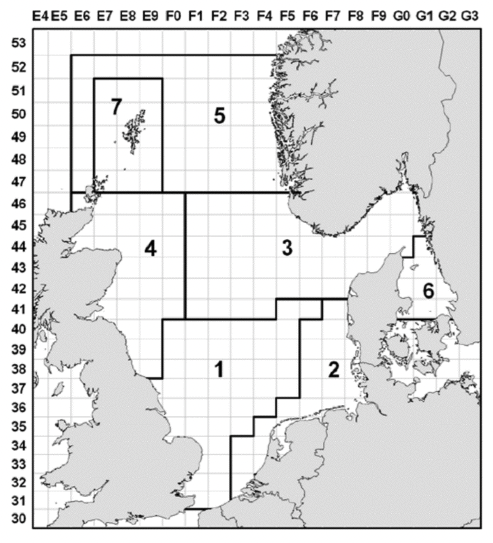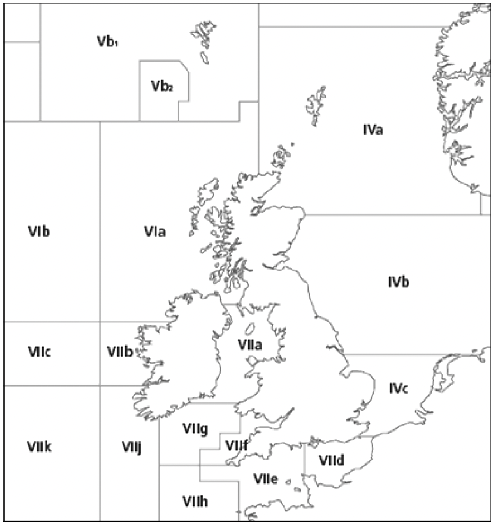Sandeel fishing consultation: draft partial business and regulatory impact assessment
The draft partial business and regulatory impact assessment for the consultation on proposals to close fishing for sandeel in all Scottish waters.
Benefits
Option 0: Do Nothing
There is not expected to be any additional benefits of continuing with the current status quo of not allocating sandeel quota to UK vessels. For Scottish businesses, both catching and onshore, the current practices would remain unchanged. There would be no environmental benefits.
Option 1: Complete closure of all Scottish waters to sandeel fishing (preferred option)
The extension of the current closure to all waters, is associated with a number of potential benefits to the sandeel stock and the wider marine ecosystem.
The sandeel areas that would be directly impacted by the closure in Scottish waters are situated within the ICES areas of IVa, IVb and IVc, as shown below in Figures 2 and 3.


The following section considers the benefits of the preferred option only: complete closure of the Scottish sandeel fishery.
- Sandeel: The extended closure would cover all of the sandeel fishing grounds in Scottish waters of sandeel area 4. Restricting sandeel fishing in Scottish waters therefore may benefit the health of the stock, which may lead to an increase in abundance.
- Seabirds, whitefish species and marine mammals: Sandeel is a key prey species for some seabird species (e.g., as kittiwakes, guillemots, puffins, and gannets), whitefish species (cod, whiting, haddock) and marine mammals (grey and harbour seals, harbour porpoises)[10] which are present in the area that would be included in this closure. Restricting sandeel fishing will also reduce bycatches of whiting and mackerel, as these bycatches are currently taken in the sandeel fishery and counted against the sandeel quota.
- Marine Protected Areas: The extension to all Scottish waters would mean that the closure would cover all MPAs in Scottish waters, including those in which seabirds and marine mammals are a protected feature. This also includes MPAs designated due to the importance of sandeel populations (e.g., Mousa to Boddam, North West Orkney and Turbot Bank).
- Good Environmental Status: As of October 2019, the UK has not achieved Good Environmental Status (GES) for breeding seabirds and for harbour seals in the North Sea. Better management of sandeel fisheries in Scottish waters could contribute to achieving GES for these receptors.[11]
Option 2: Extension of the existing closure to all of sandeel management area 4 only
The option of extending the existing closure to all of sandeel area 4 is not expected to bring the same benefits as a complete closure. There could be a reduction in pressure on the sandeel stock, however this could be offset by displacement into other areas.
Option 3: Seasonal closure of the sandeel fishery
A seasonal closure has the potential to reduce the pressure on the sandeel stock, but there are environmental concerns that the seasonal nature of the fishery could change over time.
Option 4: Voluntary closure of the sandeel fishery
The benefits of a voluntary approach could span from low to high, dependant on industry buy-in.
Contact
Email: sandeelconsultation@gov.scot
There is a problem
Thanks for your feedback